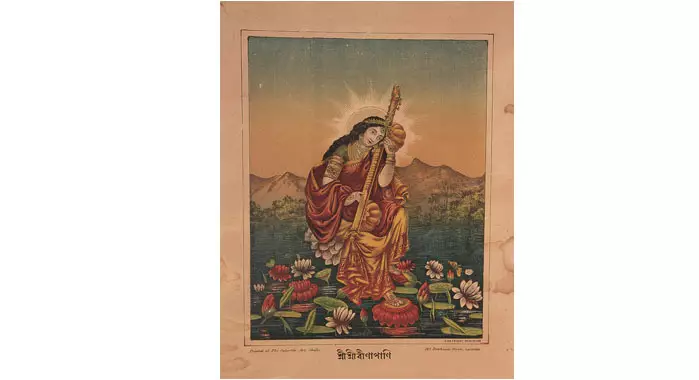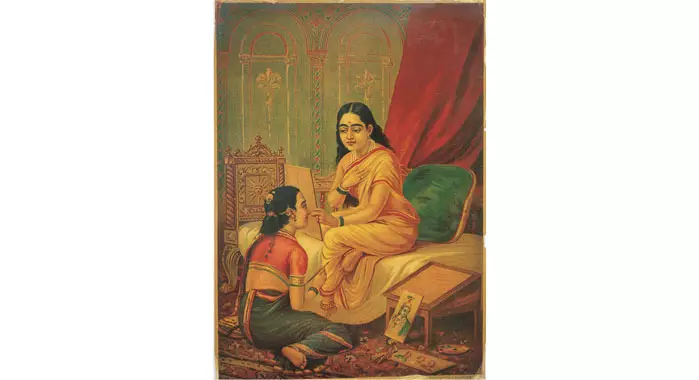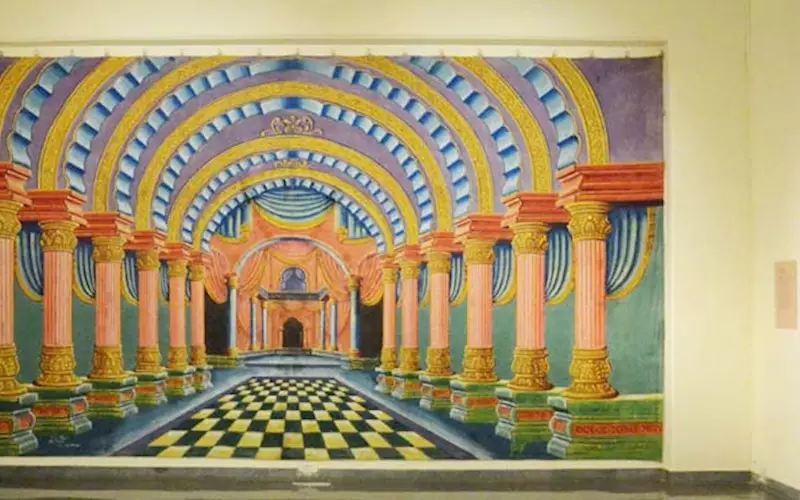How popular imagery shaped modern India
At Dr Bhau Daji Lad Mumbai City Museum in Mumbai, the Sanskriti Foundation and Marg Foundation presented Indian Popular Visual Culture: The Conquest of the World as Picture, a exhibition curated by Jyotindra Jain. The exhibition was held from 9 to 30 April 2017.
03 May 2017 | By Krishna Naidu
The exhibition offered a critical view of the role played by popular Indian imagery of the 19th and 20th century in the construction of cultural, social and national identities. The 19th century India witnessed several major cultural and technological transformations – the pedagogy of the colonial art school; exposure to European pictures circulating in the Indian market; the advent of the techniques of engraving, lithography and oleography; the emergence of photography and the proscenium stage – that led to the growth of a new popular imagery.

Beenapani (goddess Saraswati playing the veena) Artists unknown, late 19th century, print, 40 x 30 cm. Collection: Jyotindra Jain, Delhi
The colonial art school emphasis on perspective and realism endowed the idealised, traditional imagery with a more tangible and sensual presence. In combination with influences from the newly introduced proscenium theatre, which used powerful iconic and narrative formations, and from photography, which could depict heightened corporeality and individuality; this engendered a new class of popular cultic, mythological and nationalist imagery. Mass production and circulation of the imagery became a potent instrument in creating and negotiating interstices between the sacred, the erotic, the political and the colonial modern.

Birth of Krishna. Artist unknown, c 1890s, chromolithograph, 40 x 30 cm. Printed at Chore Bagan Art Studio, Calcutta. Private Collection, Delhi
The mass manufacture of images transformed the very nature of Hindu belief and worship, through the work of artists like Ravi Varma, the classical Hindu mythology was revived, romanticised and circulated all over the country, providing a nation-wide homogeneity to the visual culture of Hinduism. The images including engravings, chromolithographs, oleographs, photographs, postcards and film posters were on display.

Chitralekha. Ravi Varma, early 20th century, print, 50 x 36 cm. Printed at Ravi Varma Press, Karla-Lonavla. Collection: Jyotindra Jain, Delhi
The exhibition also demonstrated how printing and mass circulation of images widely influenced the nature of belief and worship in India and eventually acted as a powerful vehicle in strengthening the independence movement and the spirit of patriotism.
About the curator
Dr Jyotindra Jain is the director and managing trustee of CIViC: Centre for Indian Visual Culture, New Delhi. Dr Jain’s major publications include Tradition and Expression in Mithila Painting (1996), Other Masters: Five Contemporary Folk and Tribal Artists of India (1998), Picture Showmen: Insights into the Narrative Tradition in Indian Art (1998), Kalighat Painting: Images from a Changing World (1999) and Indian Popular Culture: The Conquest of the World as Picture (2004).














 See All
See All